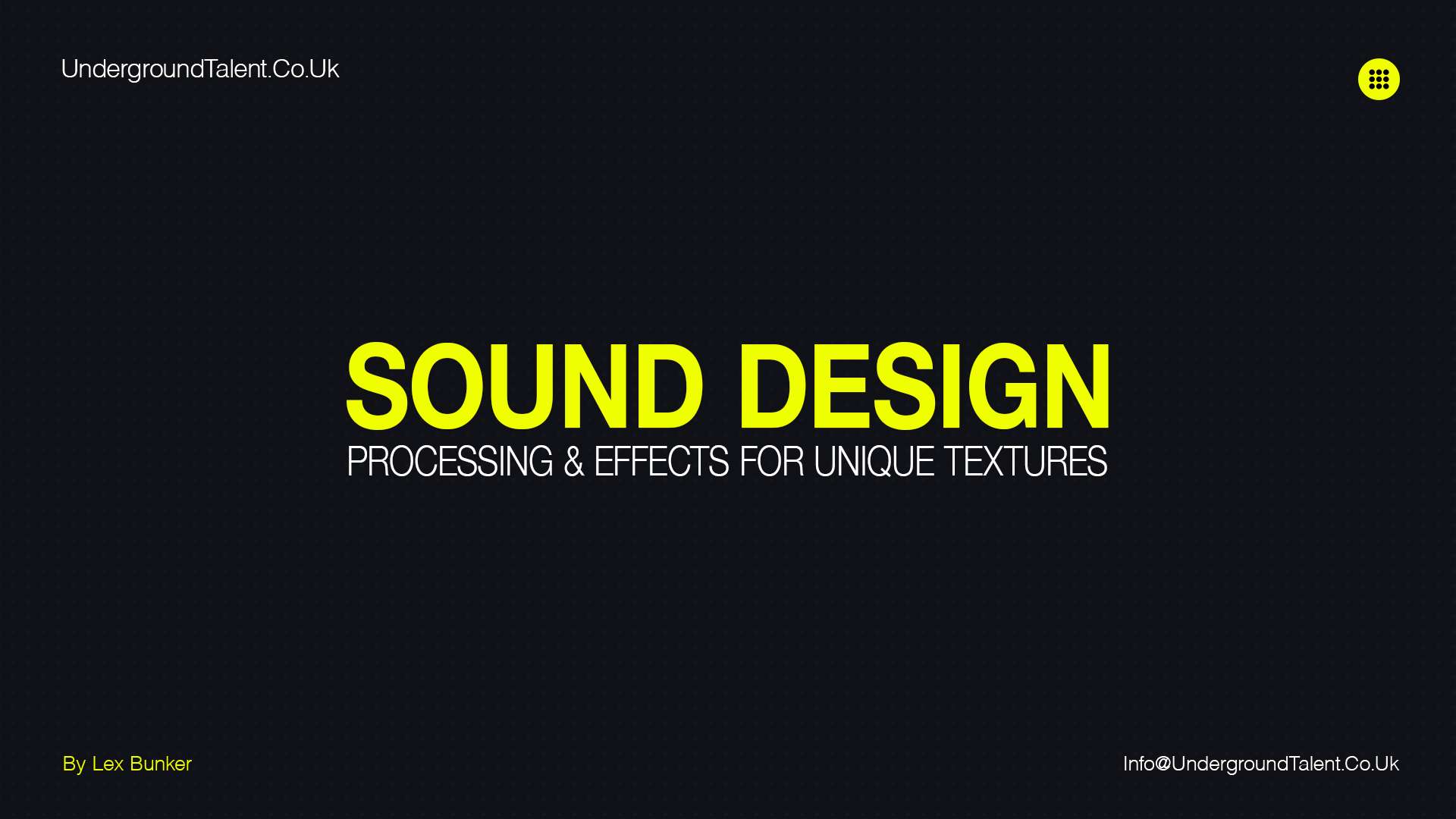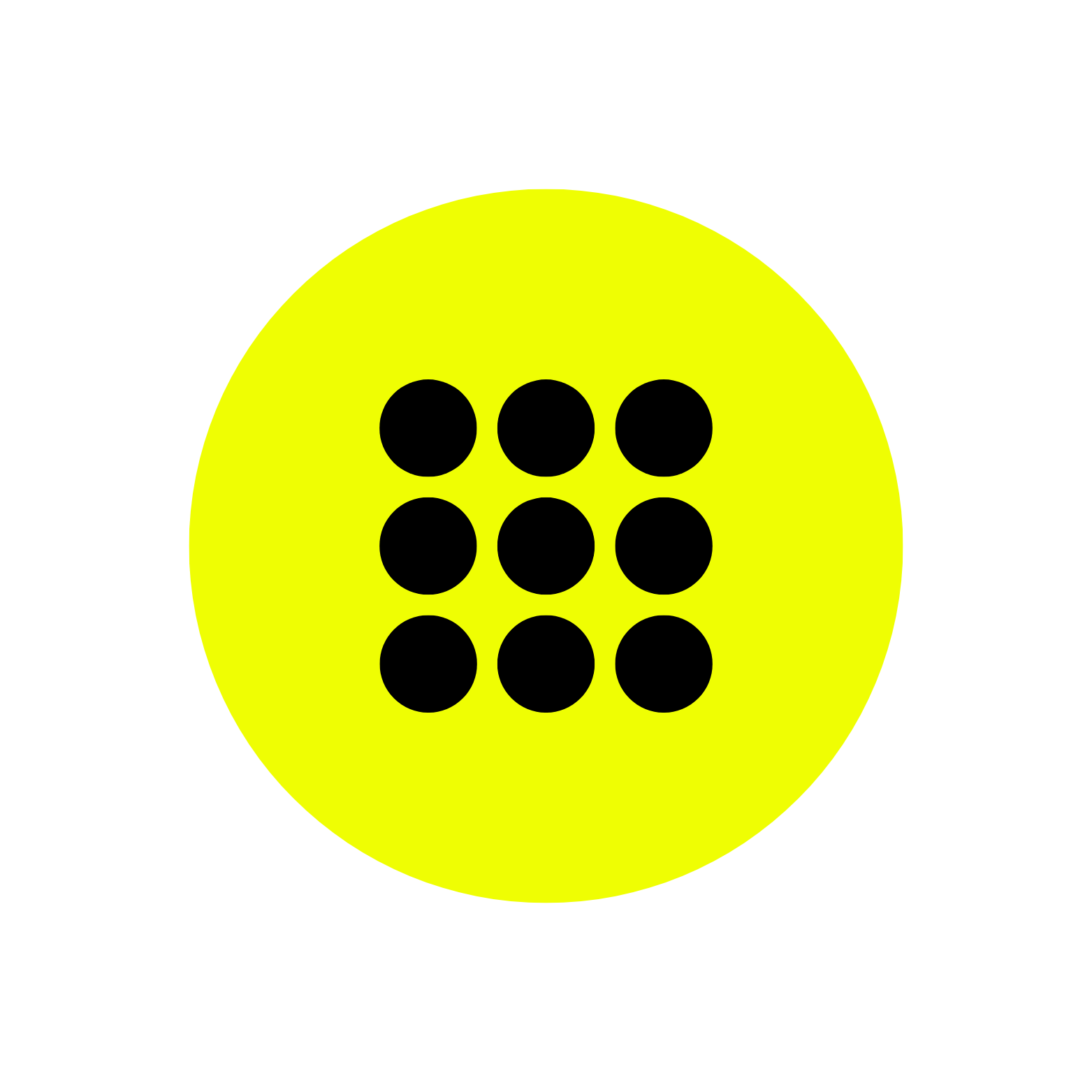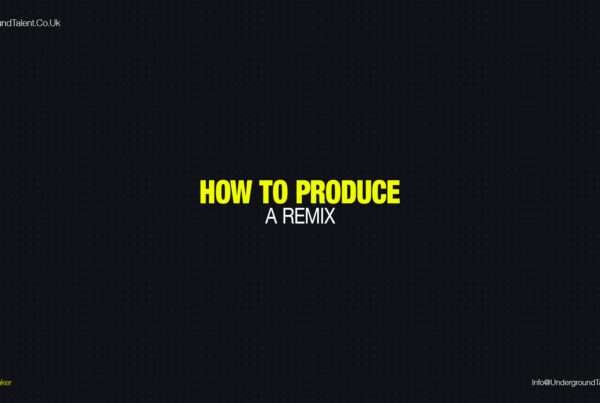Introduction to Sound Design
Welcome to sound design, the beating heart of electronic music. It’s the art and science of creating sonic textures, the very essence that gives music its unique identity. From pulsating beats to atmospheric soundscapes, sound design is the invisible hand that shapes the auditory experience. In this comprehensive guide, we’ll journey through the fascinating sound design techniques.
Sound design is more than just a technical process; it’s a form of sonic storytelling.
It’s the difference between a song that merely plays in the background and one that pulls you into its world. Whether you’re an aspiring producer or a seasoned musician, understanding sound design can elevate your music to new heights.
In the upcoming sections, we’ll delve into various sound design techniques, starting with the foundational concept of sampling. We’ll explore how you can capture, manipulate, and transform sounds to create unique musical elements.

Don’t Miss: Techno Loops V1: High-Quality Analog Loops for Music Production
Sampling in Sound Design
Sampling is a cornerstone of sound design, particularly in electronic music. It’s the process of recording a sound, known as a ‘sample’, and repurposing it within a musical context. This could be anything from a musical note to a voice, or even the ambient sounds of nature. The beauty of sampling lies in its simplicity and its endless potential for creativity.
But sampling isn’t just about capturing sounds. It’s about transforming them into something uniquely yours. This is where the art of creative manipulation comes into play. You can stretch a sample, reverse it, loop it, or even layer multiple samples together. With a dash of creativity, a simple sound can morph into a powerful bassline, a rhythmic drum pattern, or an atmospheric pad.
In the world of sampling, the only limit is your imagination. You might just stumble upon a sound that becomes the signature of your next track. Stay tuned as we continue to unravel the mysteries of sound design.
Read Also: Brutalism by Erald (Free Sample Pack)
Synthesis
Next up on our sound design journey is synthesis, the process of creating sounds from scratch. It’s like being a sonic chef, combining ingredients to cook up unique auditory flavours. Synthesis forms the backbone of many iconic sounds in electronic music, from punchy basslines to soaring leads.
There are several types of synthesis, each with its unique approach to sound creation.
Subtractive synthesis
Subtractive synthesis is like sculpting from a block of marble, you start with a rich, harmonically full sound and carve away frequencies to create your desired sound.
Additive synthesis
Additive synthesis, on the other hand, is like painting a picture. You start with silence and add frequencies to create the sound you want.
FM synthesis
FM synthesis involves modulating the frequency of one sound, called the carrier, with the frequency of another sound, called the modulator, resulting in complex and dynamic sounds.
Granular synthesis
Granular synthesis breaks a sound into tiny grains and reassembles them, creating a wide range of textures.
Wavetable synthesis
Wavetable synthesis involves scanning through a table of different waveforms, creating evolving tones.
Physical modelling synthesis
Another fascinating type of synthesis is physical modelling synthesis. It uses complex algorithms to simulate the sound of real-world instruments or even non-musical objects. It’s like having a virtual orchestra or a collection of exotic instruments at your fingertips.
Read Also: Bandcamp: How to Promote & Sell Your Music?
Effects Processing & Sound Design
Now, let’s dive into the world of effects processing, a vital tool in the sound designer’s kit. Effects are like the spices in a dish, they can transform a sound, adding depth, character, and movement.
Understanding effects processing is key to mastering sound design. It’s about knowing when to add a dash of reverb for space, a sprinkle of delay for echo, or a pinch of distortion for grit. It’s also about understanding how these effects interact with each other.
Let’s look at some common effects:
Reverb
This effect simulates the sound reflections in a physical space, adding depth and space to your sound.
Delay
Think of this as an echo effect. It takes the sound and repeats it after a short period.
Distortion
This effect adds grit and character by altering the sound wave, often used to add warmth and body.
Chorus
This effect duplicates the sound and slightly detunes and delays the duplicates, creating a fuller, richer sound.
Flanger
Similar to the chorus, this effect creates a sweeping, jet-like sound by duplicating the signal and varying the delay of the duplicate.
Each effect has its unique flavour, and when combined, they can create a wide palette of textures.
Don’t Miss: How to Stop Procrastinating & Finish Your Tracks?
Layering in Sound Design
Layering is a powerful technique in sound design. It’s like creating a sonic sandwich, where each layer adds a new flavour, resulting in a richer, fuller sound. Layering can turn simple, thin sounds into complex, full-bodied sonic experiences.
The art of layering sounds is all about balance and harmony. It’s about choosing sounds that complement each other, not compete. It’s also about understanding how to blend these sounds effectively.
Here are some techniques for effective layering:
Frequency Balance in Sound Design
Make sure each layer occupies its own space in the frequency spectrum to avoid muddiness.
Dynamics Control in Sound Design
Use compression to ensure all layers are heard and one doesn’t overpower the others.
Stereo Placement in Sound Design
Pan layers to different positions in the stereo field to create a wider, more immersive sound.
Tonal Variation in Sound Design
Use different types of sounds (e.g., synthetic, sampled, ambient) to add interest and depth.
**Note: Remember, layering is an art, not a science. Trust your ears and don’t be afraid to experiment.
Read Also: Music Production: 10 FAQs for Beginners at Level One
Granular Synthesis & Sound Design
Let’s dive into the world of granular synthesis, a technique that’s like a sonic microscope. It involves breaking a sound into tiny pieces, or ‘grains’, and then reassembling and manipulating these grains to create new sounds.
Imagine taking a sound, slicing it into a thousand tiny pieces, and then playing those pieces back in a different order, or at different speeds. That’s granular synthesis in a nutshell. It can turn a simple sound into a complex, evolving soundscape.
Creating complex soundscapes with granular synthesis is like building a mosaic. Each grain of sound is a tiny piece of the bigger picture. By manipulating the size, pitch, and duration of the grains, you can create a vast range of textures, from shimmering, ethereal pads to dense, dissonant noise.
Read Also: Stop Being a Perfectionist by Lex Bunker
Spectral Processing
Next on our sound design journey is spectral processing, a technique that’s like a sonic prism. It involves manipulating the individual frequencies of a sound, allowing you to shape and transform sounds in unique ways.
Think of a sound as a rainbow of frequencies. Spectral processing lets you adjust each colour in the rainbow, changing the brightness, hue, or even the order of the colours. This can result in subtle changes in tone colour or completely transform a sound.
Creative applications of spectral processing are vast. You can use it to remove unwanted frequencies, enhance certain harmonics, or even create spectral ‘morphs’ between two sounds. It’s a powerful tool for creating unique, otherworldly sounds.
Read Also: Best Techno Music Documentaries | Raver’s Watchlist
Convolution
Let’s explore convolution, a technique that’s like a mirror. It involves combining two sounds based on their spectral content, creating a unique blend that carries characteristics of both.
Imagine a sound as a shape. Convolution is like reflecting one shape onto another, resulting in a new, complex shape. It’s commonly used to create realistic reverb effects, as it can mimic the acoustic response of real-world spaces.
But convolution isn’t just for reverb. It can be used creatively to ‘imprint’ the spectral characteristics of one sound onto another. You could convolve a voice with a glass breaking, a guitar with a thunderstorm, or any other combination you can think of. The result is a hybrid sound that carries the ‘DNA’ of both parent sounds.
Read Also: Interview With Mark Jenkins | A Legend of Electronic Music
Resampling in Sound Design
Now, let’s dive into resampling, a technique that’s like a sonic echo. It involves bouncing a sound to audio, then re-importing it and manipulating it further. This can create complex, evolving sounds.
Think of resampling as a game of sonic telephone. You start with a sound, transform it, bounce it to audio, and then transform it again. Each round of resampling adds a new layer of complexity to the sound.
Resampling can be used in many creative ways. You could stretch a sound to extreme lengths to create ambient textures or chop a sound into rhythmic slices to create new beats. You could even resample a sound through a chain of effects to create complex, evolving soundscapes.
Read Also: The Rave Diet: What to Eat After Rave to Recover?
Algorithmic Composition
Let’s delve into algorithmic composition, a technique that’s like a sonic mathematician. It involves using algorithms or rules to generate music. This can create complex, evolving textures or rhythmic patterns.
Algorithmic composition is like creating a musical formula. You set the rules, and the algorithm generates the music. This could be as simple as a repeating pattern or as complex as a fractal-based melody.
Algorithms can be used to generate a wide range of musical elements. You could use them to create generative ambient textures, complex polyrhythms, or evolving melodic patterns. The key is in defining the rules and parameters for the algorithm to follow.
Read Also: Room Acoustics: Why do you need room treatment?
Microsound
Next, let’s explore the world of microsound, a technique that’s like a microscope. It involves working with sounds on a microscopic time scale, creating complex, granular textures.
Microsound is all about the details. It’s about zooming in on a sound until you’re working with fragments that are less than a tenth of a second long. At this scale, sounds take on a completely different character, becoming more like textures than notes.
Creating granular textures with microsounds involves manipulating these tiny sound fragments. You could stretch them, layer them, or scatter them across the stereo field. The result is a complex, evolving soundscape that’s more about texture and timbre than melody and rhythm.
Read Also: Demo Submissions: How to Send Demos to Record Labels?
Sound Morphing
Now, let’s delve into sound morphing, a technique that’s like a sonic chameleon. It involves gradually transforming one sound into another, creating a seamless transition between two different sounds.
Sound morphing is all about change and transformation. It’s about taking a sound and slowly changing its characteristics until it becomes a completely different sound. This could be a simple transition, like a piano note morphing into a guitar note, or a complex transformation, like a human voice morphing into the sound of a thunderstorm.
There are many techniques for sound morphing. You could use crossfading to gradually transition from one sound to another, or use spectral morphing to transform the frequency content of a sound. You could even use granular morphing to scatter one sound into the grains of another.
Sound morphing is a powerful tool in sound design. It’s like having a sonic transformer, allowing you to create sounds that evolve and change over time.
Read Also: Techno Sample Pack: Unleash Your Creativity with Techno Shots
Stochastic Processes & Sound Design
Let’s dive into stochastic processes, a technique that’s like a sonic lottery. It involves using random processes to generate or manipulate sound, creating complex, unpredictable textures.
Stochastic processes are all about embracing the unexpected. It’s about using randomness as a creative tool, allowing chance to shape the sound. This could be as simple as randomizing the pitch of a sound, or as complex as using a random process to generate an entire composition.
Using randomness to create complex textures involves setting boundaries for the randomness to operate within. You could set a range of pitches for a melody, a range of rhythms for a drum pattern, or a range of frequencies for a filter sweep. The key is in balancing randomness with control.
Stochastic processes are a powerful tool in sound design. It’s like having a sonic dice, allowing you to create sounds that are unique and unpredictable.
Read Also: Best Techno Clubs in London
Feedback
Now, let’s explore feedback, a technique that’s like a sonic echo chamber. It involves routing a sound back into itself, creating complex, evolving sounds.
Feedback is all about the power of repetition. It’s about taking a sound and feeding it back into itself, creating a loop that grows and changes over time. This can result in everything from subtle echoes to wild, self-oscillating sounds.
Creating evolving sounds with feedback involves careful control. Too little feedback and the effect might be too subtle to notice. Too much feedback and the sound can quickly become chaotic and uncontrollable. The key is in finding the sweet spot where the sound evolves in interesting ways without spiralling out of control.
Feedback is a powerful tool in sound design. It’s like having a mirror, allowing you to create sounds that grow and evolve on your own.
Don’t Miss: House Music – An In-depth Guide to Music Production
Modular Synthesis in Sound Design
Finally, let’s delve into modular synthesis, a technique that’s like a sonic Lego set. It involves connecting different modules in a synthesizer to create unique and complex sounds.
Modular synthesis is all about flexibility and creativity. It’s about choosing your modules, from oscillators and filters to envelopes and sequencers, and connecting them in interesting ways. This could be as simple as routing an oscillator through a filter, or as complex as creating a self-generating patch that evolves.
The flexibility and complexity of modular synthesis make it a powerful tool for sound design. You can create everything from classic analogue sounds to experimental noise. The only limit is your imagination.
Modular synthesis is like having a sonic playground, allowing you to experiment and create sounds that are uniquely yours.
Don’t Miss: Techno Tools V1 | Free Techno Sample Packs: 64 One-Shot Samples + Producers Tips
Conclusion to Sound Design
As we conclude our journey through the world of sound design, it’s clear that the future of this field is as vibrant and exciting as the sounds it produces. With the continuous evolution of technology and the ever-expanding creative possibilities, sound design is set to push the boundaries of what we perceive as music.
The future of sound design lies in the hands of the curious and the creative. It’s in the minds of those who dare to ask, “What if?” and are not afraid to venture into the unknown. From granular synthesis to algorithmic composition, the tools and techniques we’ve explored are just the beginning.
So, where do you go from here? The answer is simple: keep learning, keep experimenting, and most importantly, keep listening. Sound design is not just about creating sounds; it’s about understanding how sounds work together to create emotion and tell a story.
Remember, there’s no right or wrong in sound design, only what works and what doesn’t. So, don’t be afraid to break the rules and step outside your comfort zone. The world of sound design is a playground, and you’re only limited by your imagination.
So, go forth and create. Explore the unknown, push the boundaries, and above all, have fun. The world of sound design is your oyster, and we can’t wait to hear what you create.
Don’t Miss: Cinematic u-he Diva Presets | Metropol
Submit Your DJ Set To Techno Radar
Take the stage with your sound. Send your guest mix to info@undergroundtalent.co.uk and step into the spotlight on Techno Radar alongside Allice D.
Did You Like the Article on Sound Design? Connect with Underground Talent and Give Us a Feedback!
Connect with us on Facebook, Soundcloud, and Instagram. Share your thoughts and feedback on this article. We’re here to educate and inform you. Email us at info@undergroundtalent.co.uk for questions or comments. Discover the latest underground talent! Subscribe to our YouTube channel now. Stay on top of fresh and exciting new acts in the techno scene. Join our community of techno music lovers today. Click the subscribe button.
Additional Resources
Discover more ways to improve your sound:
- Techno Music Production Guide
- How to Promote Electronic Music | 10 Ways For Beginners
- EQ and Layering Techniques
- Low-End Techniques
- Best MIDI Keyboards for Electronic Music Production in 2024
- Sound Design & Effect Processing
Tools and Plugins
- AI Music Production & AI Mixing Tools by SmartEssentials
- Ambience VST by Smartelectronix
- Dexed: Free FM Synth VST by Digital Suburban
- Helm Synthesizer – Download Free
- D16 Repeater – Ultimate Delay Plugin
- Groove Shaper by Pitch Innovations
Get Your Free Sample Packs For Electronic Music Production
Dive into electronic music production with our freshly curated “Free Techno Tools V1” and “Free Techno Tools V2” sample packs. These packs are brimming with high-quality sounds that will add a professional touch to your tracks. If you want to expand your sound library, these free sample packs are perfect for every techno enthusiast. Click on the links below to get these fantastic free resources and elevate your production game today!
&
Take advantage of this opportunity to enrich your sonic palette with top-notch techno sounds. Grab your free sample packs now and start crafting your next techno masterpiece!
And Always Remember…
Have Fun & Be Creative!




